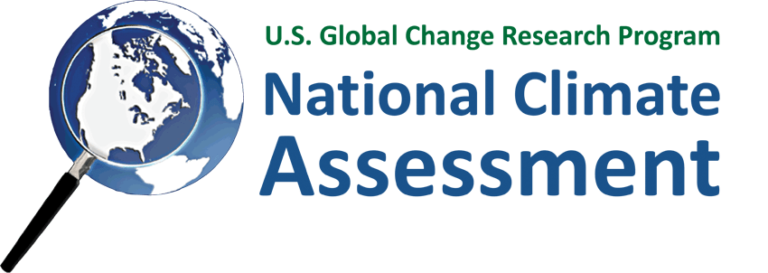In a world grappling with the harsh realities of climate change, the recently published Fifth National Climate Assessment by the United States government sheds light on both the alarming impacts and the potential for hope. This exhaustive summary of leading research not only highlights the unprecedented challenges we face, such as temperature increases, wildfires, and droughts but also emphasizes the need for immediate action and adaptation. In this comprehensive blog, we’ll delve into the regional solutions and adaptation strategies outlined in the report, offering a glimpse into how communities across the country are responding to the climate crisis.
Alaska:
Alaska, a region deeply connected to the ocean, faces threats to its traditional way of life due to warming and acidifying seas. However, innovative projects led by organizations like the Chugach Regional Resources Commission showcase the resilience of coastal communities. From beach seeding to kelp farming, Alaska is exploring diverse strategies to adapt to changing ocean conditions. On land, communities are turning to agriculture to offset the loss of traditional food sources, demonstrating the adaptability needed in the face of a warming climate.
Hawaiʻi and the Pacific Islands:
In the Pacific Islands, Indigenous communities draw on traditional knowledge to address climate change pressures. The revival of native crops, such as taro, not only restores local ecosystems but also strengthens resilience to wildfires. Additionally, these islands are leading the way in the energy transition, committing to 100% renewable energy by 2045. The integration of traditional practices with modern sustainability efforts exemplifies a holistic approach to climate adaptation.
Midwest:
Home to the Great Lakes and extensive river systems, the Midwest grapples with the dual challenge of floods and water-based transport disruptions. The report suggests solutions ranging from restoring natural floodplains to updating aging infrastructure along critical rivers. By embracing wetland restoration and sustainable water management practices, the Midwest aims to balance the blessings of abundant water with the challenges posed by climate change.
Northeast:
The Northeast, marked by powerful storms like Superstorm Sandy, showcases the power of progressive governance in tackling climate change. States in the region have set ambitious emissions reduction goals, with some aiming for an 80% reduction by 2050. Indigenous communities, like the Mi’kmaq Nation, lead in climate adaptation, emphasizing the preservation of traditions and adaptation to changing ecosystems.
Northern Great Plains:
The vast grasslands of the Northern Great Plains are under threat from climate-induced challenges. The report advocates for restoring prairies and converting farmland to grasslands to reduce water use, sequester carbon, and slow erosion. Efforts to reintroduce native wildlife, including American bison, showcase the potential of regenerative practices in agriculture. Northwest: The Northwest, known for its lush forests, faces the paradox of increasing wildfires threatening communities.
The report suggests forest management strategies like controlled burns and Indigenous knowledge incorporation. Initiatives to diversify forests and relocate species through assisted migration demonstrate adaptive approaches to preserve iconic evergreens. Forest management strategies play a crucial role in the Northwest’s response to wildfires. Controlled burns, a traditional Indigenous practice, are gaining recognition as an effective tool for reducing fuel loads and mitigating the risk of catastrophic wildfires. By intentionally setting controlled fires during favorable conditions, land managers can help prevent the accumulation of dry vegetation that can fuel larger, uncontrolled wildfires.
Southeast:
The Southeast, prone to hurricanes and intense rainstorms, grapples with the challenge of unconstrained urban sprawl. The report advocates for managed retreat strategies, emphasizing buyouts of vulnerable homes in flood-prone areas. While facing equity concerns, such initiatives, as seen in Greensburg, Kansas, present a unique opportunity for reshaping development patterns and reducing emissions.
Southern Great Plains:
Cities in the Southern Great Plains, like Houston, face the recurring challenge of rebuilding after tornadoes and floods. Greensburg, Kansas, stands out as a model for climate-resilient rebuilding, integrating energy efficiency standards and transitioning to renewable energy. Collaborative efforts among farmers to implement water restrictions showcase the agricultural sector’s adaptability to changing climate conditions.
Southwest:
The Southwest grapples with a persistent water shortage exacerbated by climate change. The report highlights the need for reducing consumption, especially in agriculture. Cities like Los Angeles invest in desalination plants and wastewater recycling, demonstrating proactive approaches to water management. The unique challenges of the region necessitate innovative strategies for sustainable water use.
U.S. Caribbean:
Puerto Rico and the U.S. Virgin Islands face unique challenges rooted in colonial structures, leading to high poverty rates. Grassroots organizations, like Vieques Love and the Foundation for Development Planning, play a crucial role in community resilience. The report emphasizes the importance of decentralized energy and adaptation systems, empowering local communities to navigate the impacts of climate change.
Conclusion:
The Fifth National Climate Assessment provides a roadmap for a resilient and sustainable future, showcasing regional strategies that blend tradition, innovation, and adaptability. As communities across the United States grapple with the impacts of climate change, these diverse approaches offer hope and inspiration for a collective response to the defining challenge of our time. By learning from each region’s experiences and embracing a holistic approach, we can work towards a more sustainable and climate-resilient future for generations to come.

